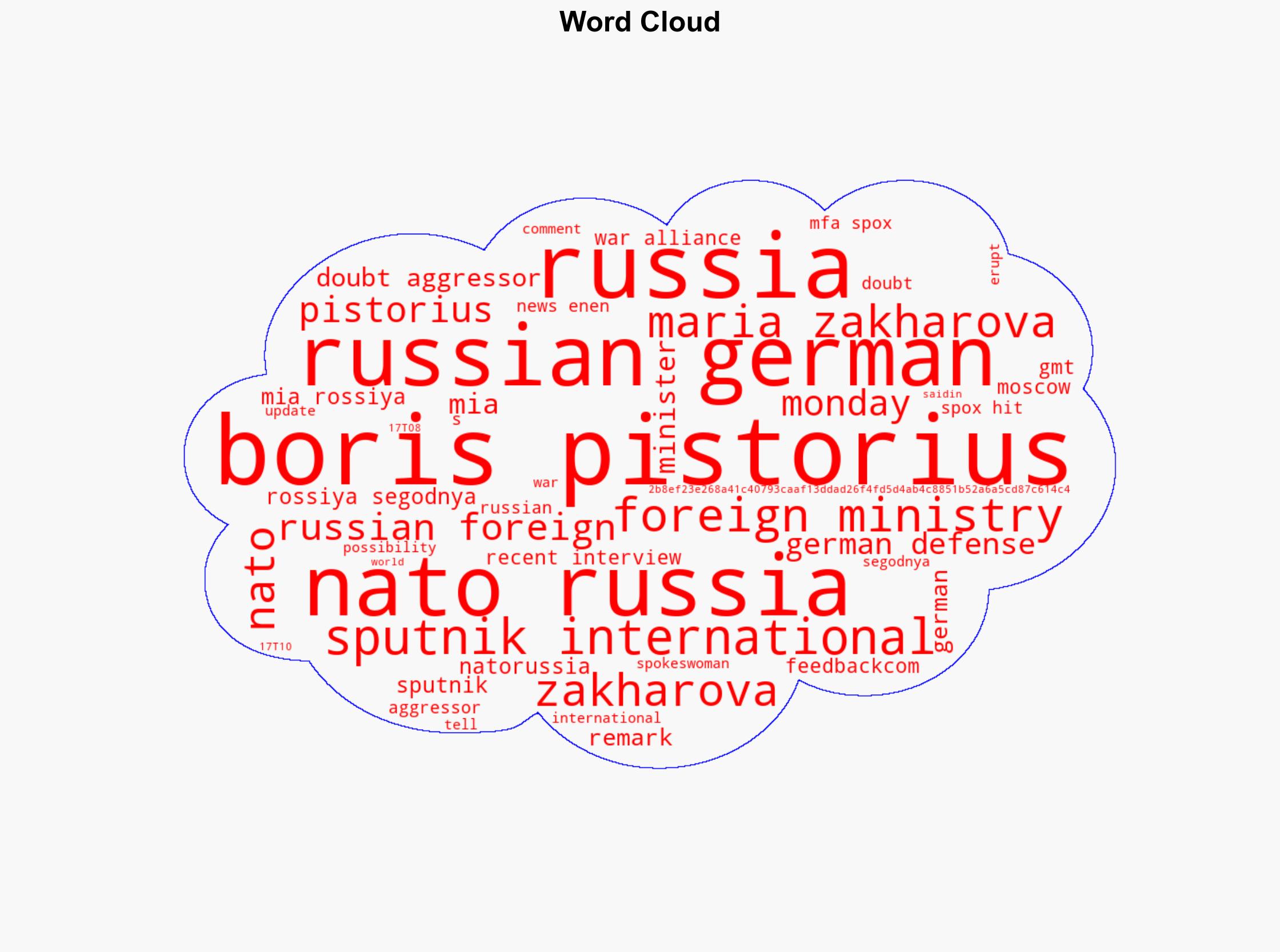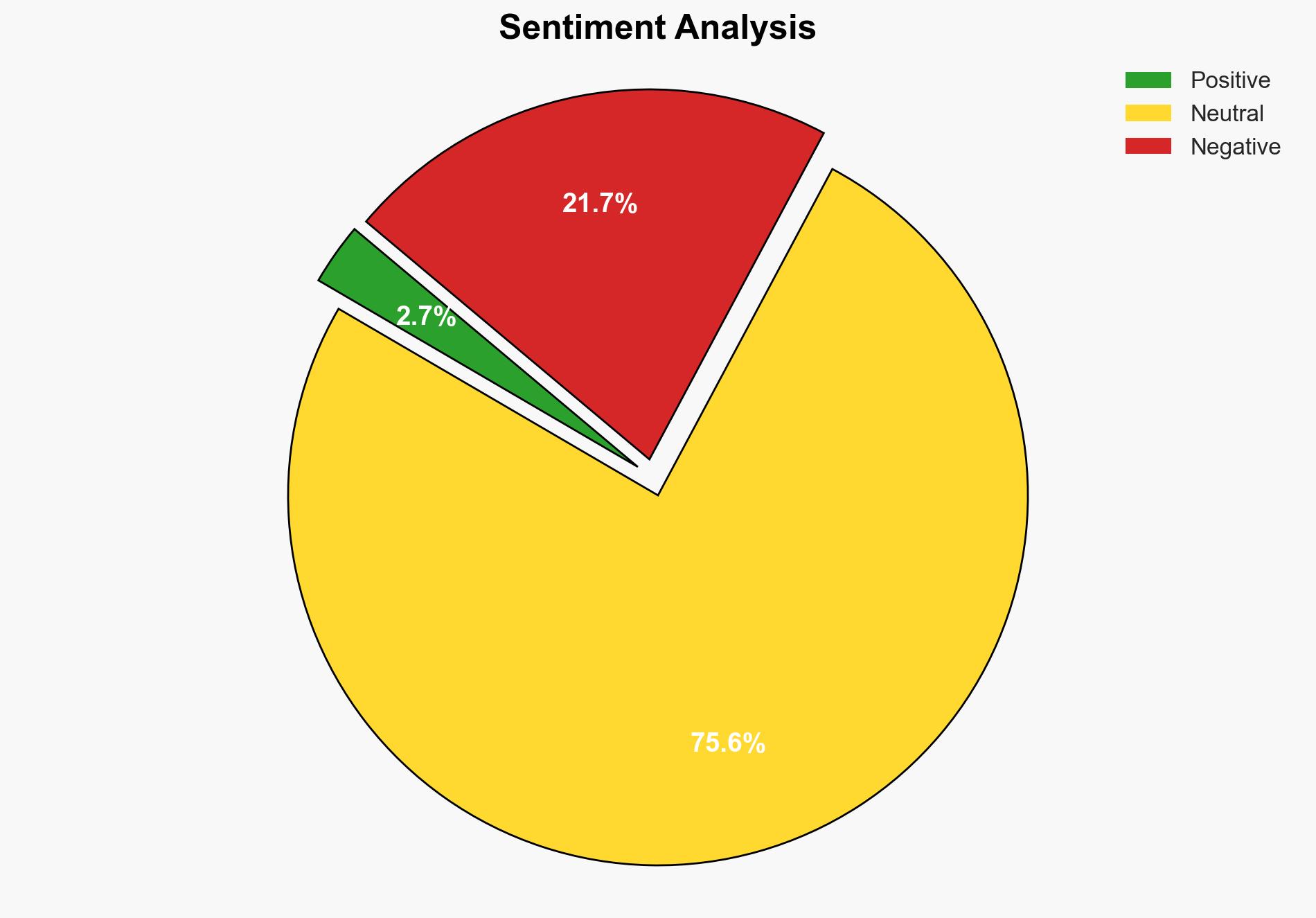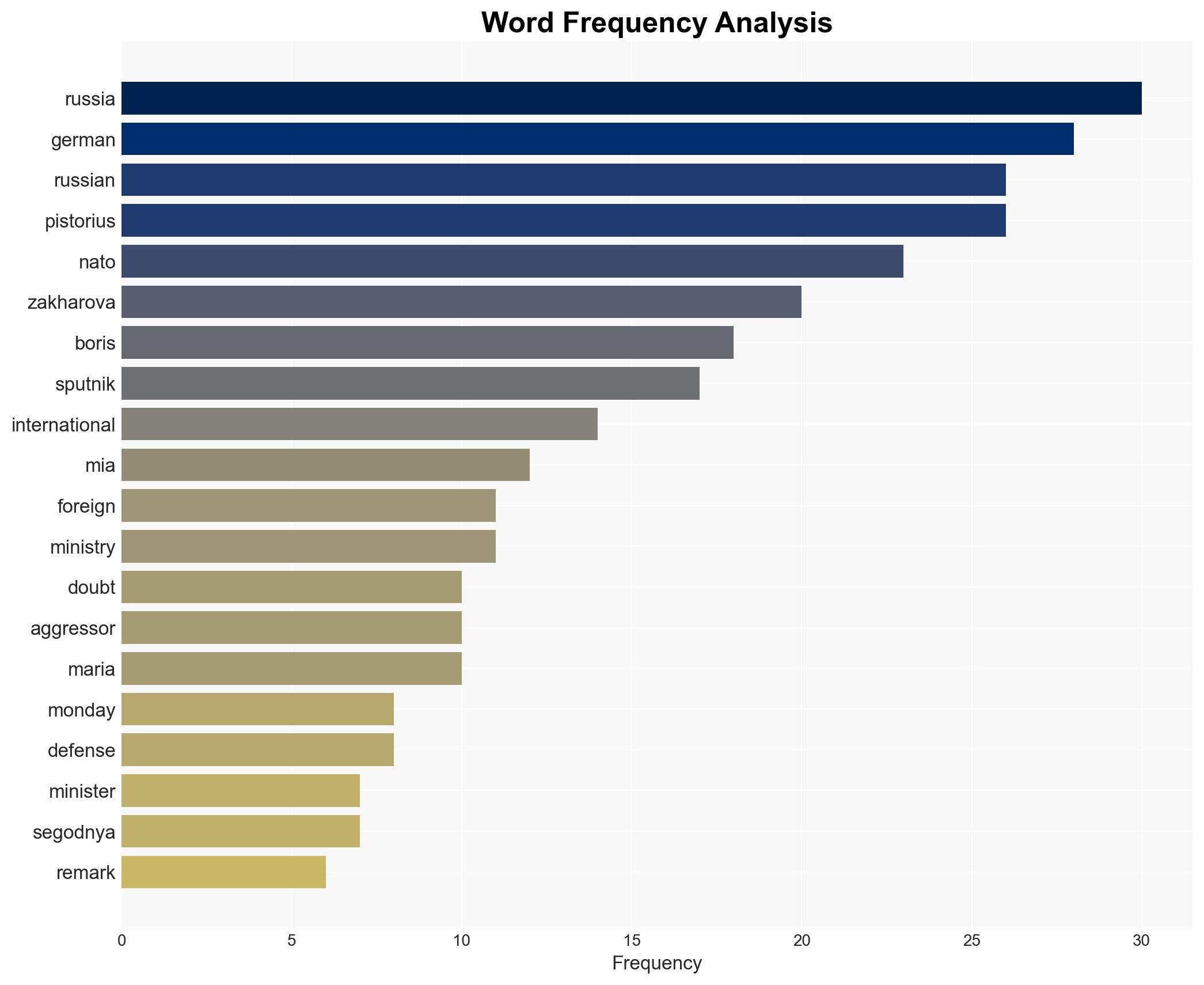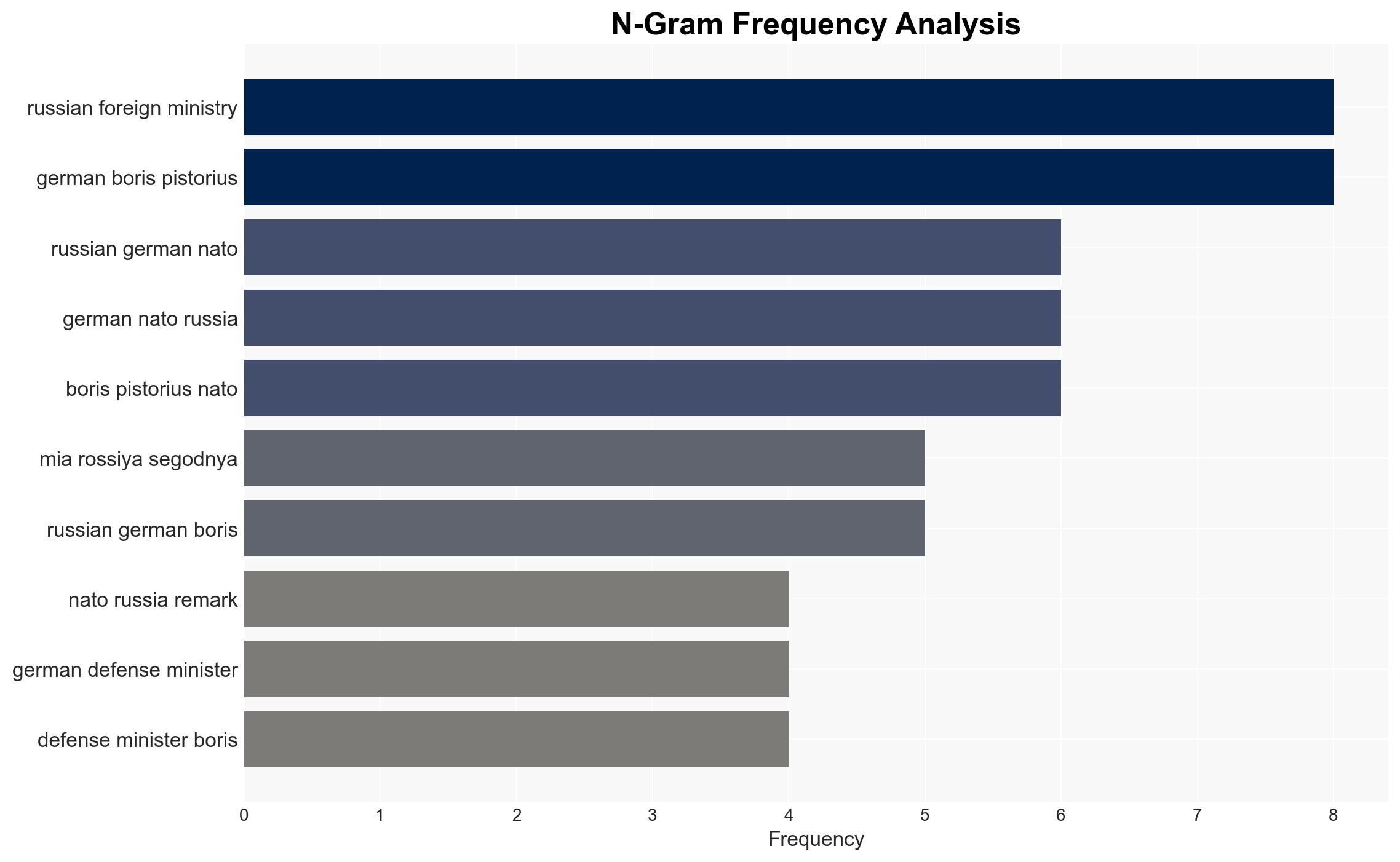No Doubt Who Aggressor Is Russian MFA Spox Hits Back at German Ministers NATORussia Remark – Sputnikglobe.com
Published on: 2025-11-17
AI-powered OSINT brief from verified open sources. Automated NLP signal extraction with human verification. See our Methodology and Why WorldWideWatchers.
Intelligence Report:
1. BLUF (Bottom Line Up Front)
With a moderate confidence level, the most supported hypothesis is that the Russian Foreign Ministry’s response is a strategic communication effort to deflect and counter NATO’s narrative, emphasizing Russia’s stance as a non-aggressor. Recommended action includes enhancing diplomatic channels to reduce tensions and monitoring media narratives for shifts in public perception.
2. Competing Hypotheses
Hypothesis 1: The Russian Foreign Ministry’s statement is a defensive posture aimed at countering NATO’s narrative and maintaining Russia’s image as a non-aggressor.
Hypothesis 2: The statement is part of a broader Russian strategy to prepare its domestic and international audiences for potential escalations, framing any future conflict as defensive.
Hypothesis 1 is more likely due to the immediate context of the statement being a direct response to comments made by a German minister, suggesting a reactive rather than preemptive communication strategy.
3. Key Assumptions and Red Flags
Assumptions: It is assumed that the Russian Foreign Ministry’s statements are reflective of official policy and not merely rhetorical. The analysis assumes that the German minister’s comments were perceived as a significant provocation by Russia.
Red Flags: The source, Sputnik, is state-affiliated media, which could indicate bias or propaganda. The repetitive nature of the message suggests a potential overemphasis, which could be a tactic to reinforce a specific narrative.
4. Implications and Strategic Risks
The ongoing exchange of statements between NATO and Russia heightens the risk of miscommunication and miscalculation, potentially leading to political and military escalations. The narrative battle could also impact cyber and informational domains, with increased propaganda and misinformation campaigns.
5. Recommendations and Outlook
- Enhance diplomatic engagement with both NATO and Russian counterparts to clarify intentions and reduce tensions.
- Monitor media and social media for shifts in narrative and public perception to anticipate potential escalations.
- Best-case scenario: De-escalation through diplomatic channels and a mutual understanding of intentions.
- Worst-case scenario: Escalation into a broader conflict involving cyber and military actions.
- Most-likely scenario: Continued rhetorical exchanges with limited direct confrontation, maintaining a status quo of tension.
6. Key Individuals and Entities
Maria Zakharova, Boris Pistorius
7. Thematic Tags
Cybersecurity, Strategic Communication, NATO-Russia Relations, Propaganda
Structured Analytic Techniques Applied
- Adversarial Threat Simulation: Model and simulate actions of cyber adversaries to anticipate vulnerabilities and improve resilience.
- Indicators Development: Detect and monitor behavioral or technical anomalies across systems for early threat detection.
- Bayesian Scenario Modeling: Quantify uncertainty and predict cyberattack pathways using probabilistic inference.
Explore more:
Cybersecurity Briefs ·
Daily Summary ·
Support us
·





